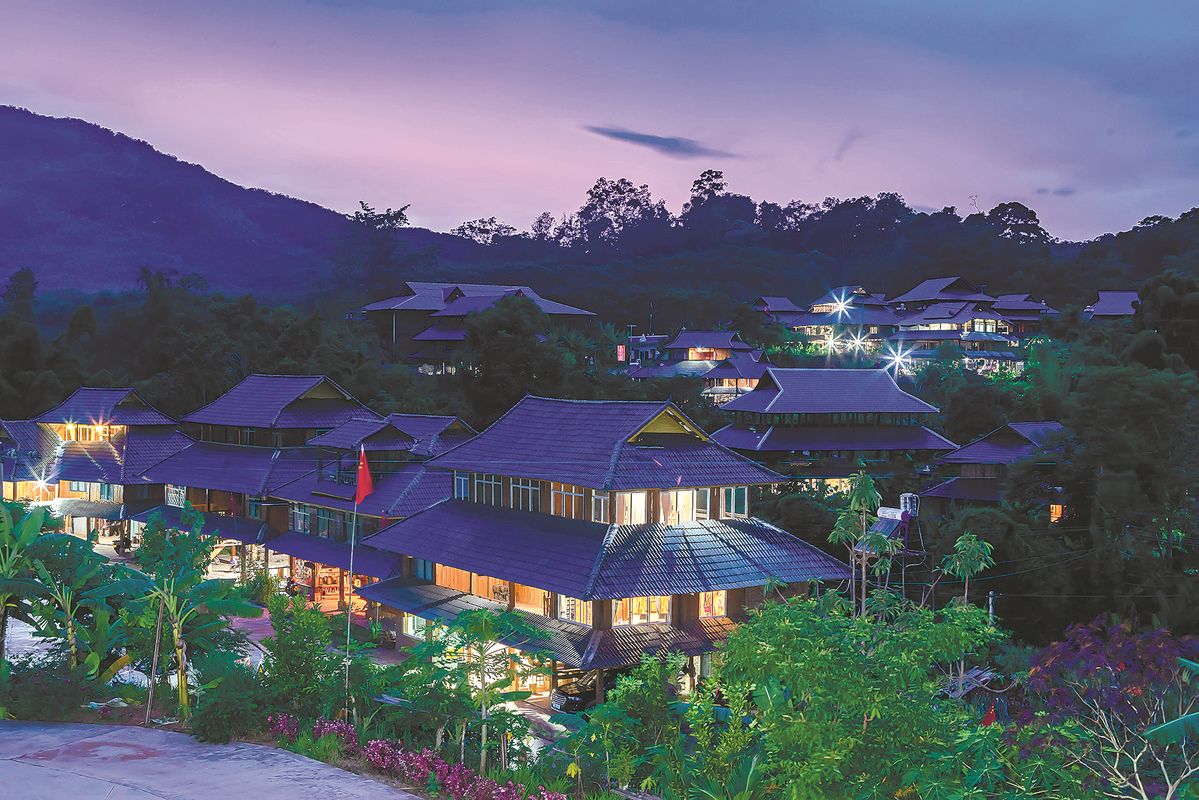Rural areas taste commercial success
China Daily, April 11, 2023 Adjust font size:
Hebian village, an ethnic Yao community, sits on the edge of a subtropical forest in Yunnan province.
Tasteful effect
He Wei, dean of the architecture department at the Central Academy of Fine Arts in Beijing, said many traditional rural communities are pleasant sights.
Unlike urban residents living in high-rise apartments, those in rural areas design and build their own homes — often using materials sourced locally, such as rocks in mountainous regions, or timber in southern provinces. As a result, most rural homes are not as neatly positioned as tower blocks in cities. However, these two- or three-story traditional homes blend perfectly with their surroundings.
"These properties unexpectedly create a tasteful visual effect, and standing outside these homes is a relaxing and pleasant experience," He said.
A love of rural life helped inspire He to turn a crumbling dirt house in Pingtian village, a cloud-enveloped hamlet in Songyang, Zhejiang province, into a popular hostel for young people.
Named Yeyejia, which translates as "grandpa's", the property was inherited by He's client from his grandfather. The two-story structure — the second floor is used to store grain — is more than 100 years old, but time and lack of repairs had left their mark on the rough-looking exterior walls.
Like many villages in China, Pingtian had largely been deserted by its residents, with just a few seniors remaining. Situated halfway up a slope, the village is surrounded by mountains.
To avoid interfering with the farmhouse's "harmonious relations" with its surroundings, He and his colleagues decided to preserve the exterior while making significant changes to the interior. The aim was to provide cozy accommodations for visitors — mostly young people — and offer a temporary escape from urban life.
"The modern interior contrasts sharply with the property's mottled facade. This contrast spills over through the doors and windows, creating a strong psychological tension and sense of beauty. The design brings history into contemporary life," He said.
Traditional homes should not be preserved by "fixing" them to a certain time in history. Instead, preservation efforts should meet the demands of modern-day residents, He added.
Since 1978, China has gradually opened up its economy and launched a rapid urbanization drive that encompasses efficiency and most modern aspects of city life.
To a certain degree, this process has eroded rural culture and led to the demolition of traditional homes to make way for concrete and steel structures, He said. As a result, many villages that are thousands of kilometers apart basically look the same.
Urbanization has brought many rural people to cities, but society should be wary of rural areas being significantly changed by urbanization, He added.
Tang Ying in Nanchang contributed to this story.

